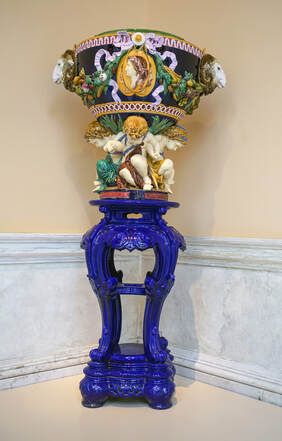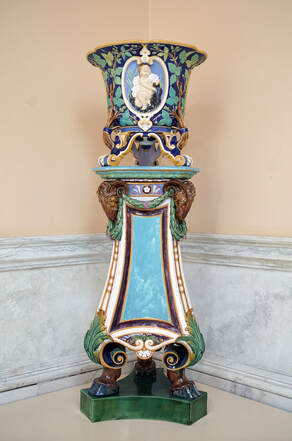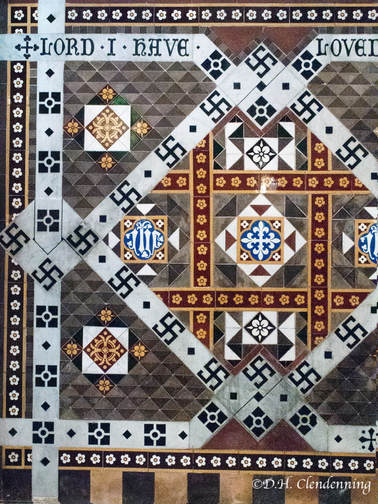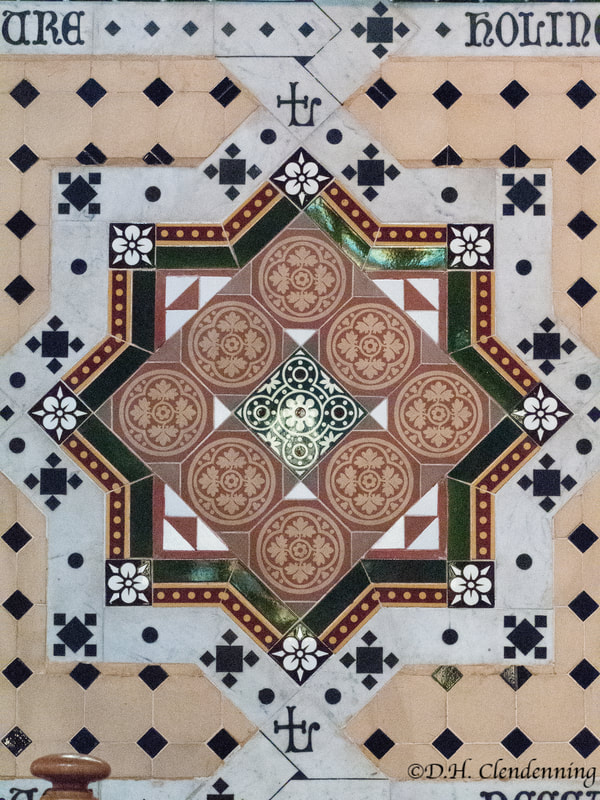England
Ceramics and Tiles from England
Pair of Majolica Jardinieres (Garden Pots) on Stands, early 1870s-1883
Minton Ceramics Manfuactory (established 1796)
Designer: Albert-Ernest Carrier-Belleuse (French, 1824-87)
English (Stoke-on-Trent, Staffordshire)
Majolica, for which the English company of Minton was especially famous, appealed to Victorian taste with its bright colours, bold designs, and historical associations. Inspired by maiolica, tin-glazed earthenware of the Italian Renaissance, English majolica depended on a different manufacturing process that employed opaque coloured glazes and enamels. It was a practical material and was put to many uses in middle- and upper-class homes, sometimes as highly decorative containers for plants, like these impressive garden pots. As the popularity of majolica increased, Minton expanded their production into tablewares, figures, and ornaments, with prices to suit every budget.
Minton Ceramics Manfuactory (established 1796)
Designer: Albert-Ernest Carrier-Belleuse (French, 1824-87)
English (Stoke-on-Trent, Staffordshire)
Majolica, for which the English company of Minton was especially famous, appealed to Victorian taste with its bright colours, bold designs, and historical associations. Inspired by maiolica, tin-glazed earthenware of the Italian Renaissance, English majolica depended on a different manufacturing process that employed opaque coloured glazes and enamels. It was a practical material and was put to many uses in middle- and upper-class homes, sometimes as highly decorative containers for plants, like these impressive garden pots. As the popularity of majolica increased, Minton expanded their production into tablewares, figures, and ornaments, with prices to suit every budget.
Encaustic (meaning 'burnt in') Tiles
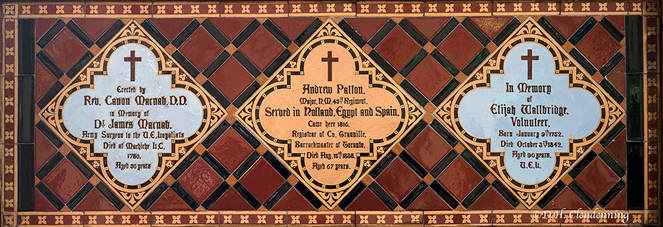
Three United Empire Loyalists Plaques, St. Alban's Loyalist Church, Adolphoustown, eastern Ontario. Minton encuastic tiles, England, c. mid-1900s.
|
These photo were taken two days before the devastating 2011 earthquake which levelled Christchurch, New Zealand and destroyed the cathedral.
THE FYLFOT The Fylfot or swastika is an ancient symbol which has been found in the ruins of Troy, Egypt, China and India. In the Sanskrit language svastika came from svasti, meaning property, from the belief that the symbol brought good luck. The fylfot was a favourite symbol of the Victorians. These encaustic (meaning 'burnt in') tiles were imported from England and the wall of the cathedral construction in 1885. |
